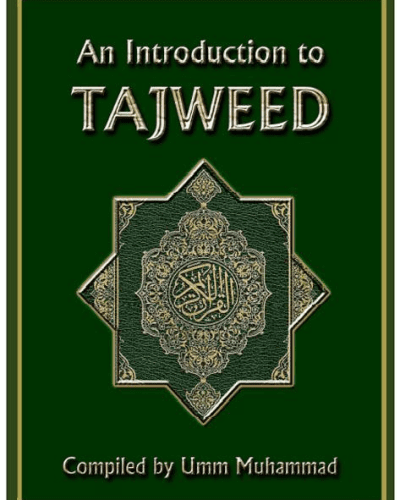
Tajweed
Master the Art of Quranic Recitation with Our Tajweed Course!
Join us on a journey to perfect your Quranic recitation with our comprehensive Tajweed course. Learn the intricate rules of Tajweed and develop a deeper connection with the Word of Allah.
Our expert instructors will guide you through:
- The fundamentals of Tajweed
- Correct pronunciation and intonation
- Rules of recitation (Qawaid)
- Understanding the secrets of the Quranic script
- Practical exercises and recitation practice
Improve your recitation skills, enhance your spiritual growth, and experience the beauty of the Quran like never before!

Tajweed Course Outline:
Introduction to Tajweed
- Definition and importance of Tajweed
- History and development of Tajweed
Fundamentals of Tajweed
- Correct pronunciation of Arabic letters and words
- Understanding the Quranic script and diacritical marks
- Basic rules of recitation (Qawaid)
Rules of Tajweed
Long and short vowels (Madd and Kasrah)
Consonant pronunciation (Mim and Nun)
Rules of Ra and La
Hamzah and its rules
Sukoon and its rules
Advanced Tajweed Rules
Idghaam and Ikhfa
Iqlab and Its rules
Ghunna and its rules
Qalqalah and its rules
Practical Recitation and Practice
- Recitation of selected Surahs and Ayahs
- Practice exercises to reinforce Tajweed rules
Brief Overview of Tajweed Rules:
- Madd (مَد): Long vowels
- Kasrah (كسرة): Short vowels
- Mim (ميم) and Nun (نون): Consonant pronunciation
- Ra (ر) and La (لا): Special rules for these letters
- Hamzah (همزة): Rules for the glottal stop
- Sukoon (سكون): Rules for silence and pause
- Idghaam (إدغام): Merging of consonants
- Iqlab (إقلاب): Changing of consonants
- Ghunna (غنة): Nasalization of consonants
- Qalqalah (قلقلة): Special rules for certain letters


Improve your recitation skills, enhance your spiritual growth, and experience the beauty of the Quran like never before!
Tajweed course and its rules: Tajweed Course Outline:
The word Tajweed means doing something well. It is to recite every letter correctly from its proper origin (makhraj) with its all qualities.
Learning “Tajweed” is very important for recitation because applying the rules of Tajweed protect us from making mistakes.
There are two types of mistakes.
1:- Clear Mistake (لحن الْجَلِى):
It is changing a letter or changing a sign (harakah). This type of mistake is haraam.
2:- Hidden Mistake (لحن الخَفِى):
It is ignoring ghunnah, ikhfa, iqlab, idgham etc. We should avoid this type of mistake.
The place from where a letter comes out from our mouth is called makhraj.
There are six (6) throatal letters.
These letters are pronounced from three levels of our throat.
1- Bottom of the Throat (ء ه )
2- Middle of the Throat ( ع ح )
3- Top of the Throat (غ خ)
There are seven (7) bold letters.
These letters are pronounced with a heavy and strong voice.
خ ص ض غ ط ق ظ
These are arranged in a combination
There are three harakaat (Movements) in Arabic.
(1) (Fathah or Zabar) ( ــَـ ) (Prolong it for one count)
(2) (Kasrah or Zer) ( ــِـ ) (Prolong it for one count)
(3) (Dammah or Pesh) ( ــُـ ) (Prolong it for one count)
If a letter is without a harakat sign, it is called saakin (resting position), and a sign (ــْـ) appears over this letter is called Sukoon (jazm).
Silent letters are letters that are written in the Arabic script but are not pronounced when reciting the Quran. These letters don’t have any sign or sukoon (empty letters).
Here are some common examples of silent letters:
Silent letters are letters that are written in the Arabic script but are not pronounced when reciting the Quran. These letters don’t have any sign or sukoon (empty letters).
Here are some common examples of silent letters:
Tanween, also known as Nunation represents the sounds “an”, “in”, or “un” and are typically written as small symbols ( -ً -ٍ -ٌ )above or below the letter.
Ghunnah means a nasal sound produced when reciting the letters Noon or Meem with Tashdid ( ّ- ) sign. Ghunnah adds a distinct and melodious quality to the recitation when performed correctly.
( اِنَّ , ثُمَّ )
Letters Alif ا , Wao وْ , and Yaa يْ are called maddah letters. When letter Alif ا comes after Fatha ﹷ , letter Wao sakin وْ comes after Dammah ﹹ , and letter Yaa sakin يْ comes after Kasrah ﹻ, we stretch (lengthen) the sound of the letter upto two measures of harakah.
( كَانَ , يَقُوْلُوْنَ , اَخِيْهِ )
Letters Alif ا , Wao وْ , and Yaa يْ are called maddah letters. When letter Alif ا comes after Fatha ﹷ , letter Wao sakin وْ comes after Dammah ﹹ , and letter Yaa sakin يْ comes after Kasrah ﹻ, we stretch (lengthen) the sound of the letter upto two measures of harakah.
( كَانَ , يَقُوْلُوْنَ , اَخِيْهِ )

